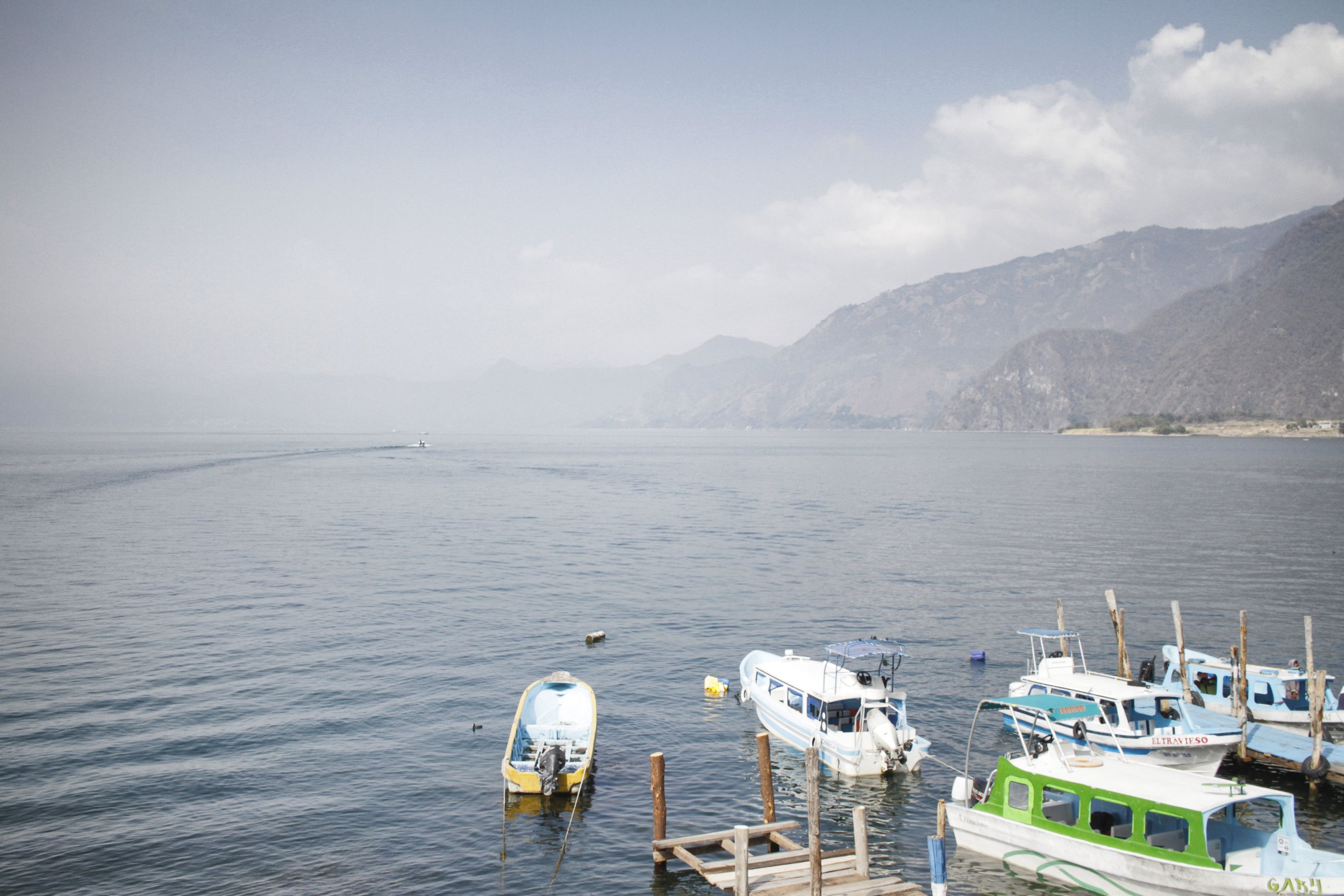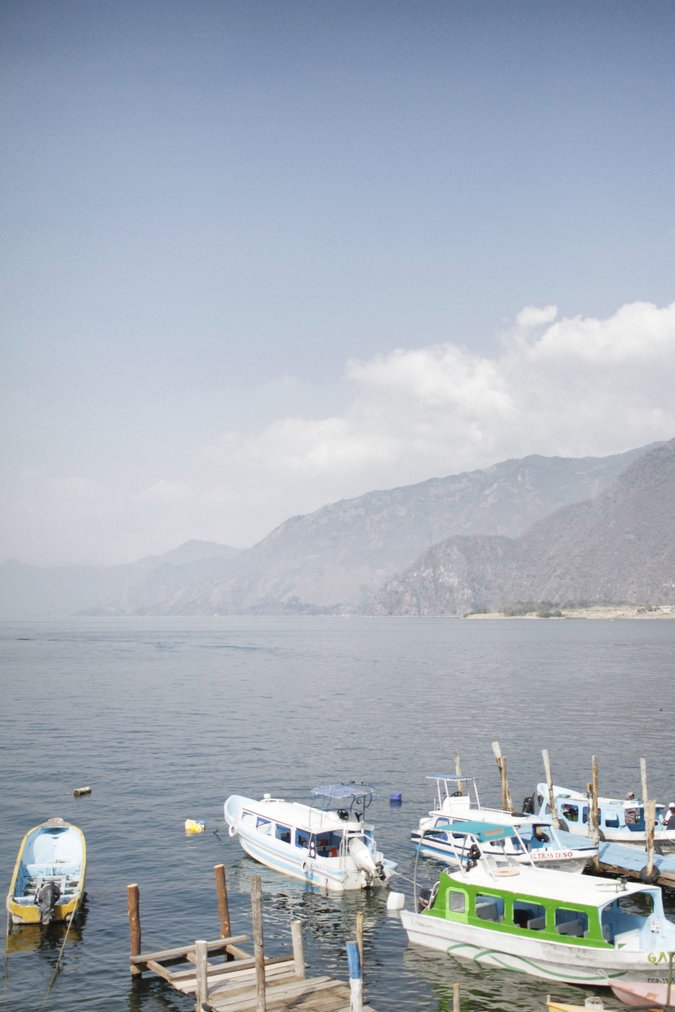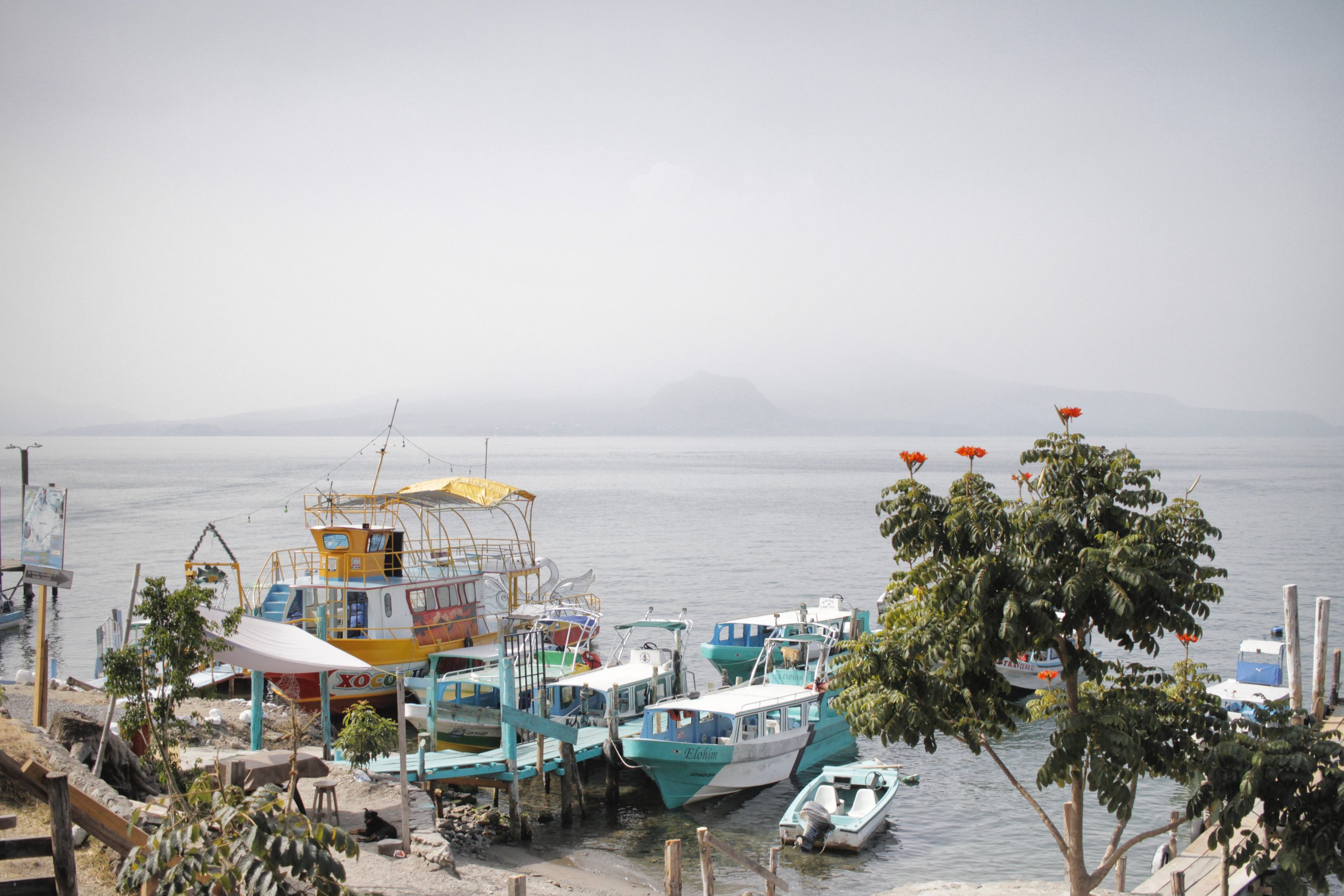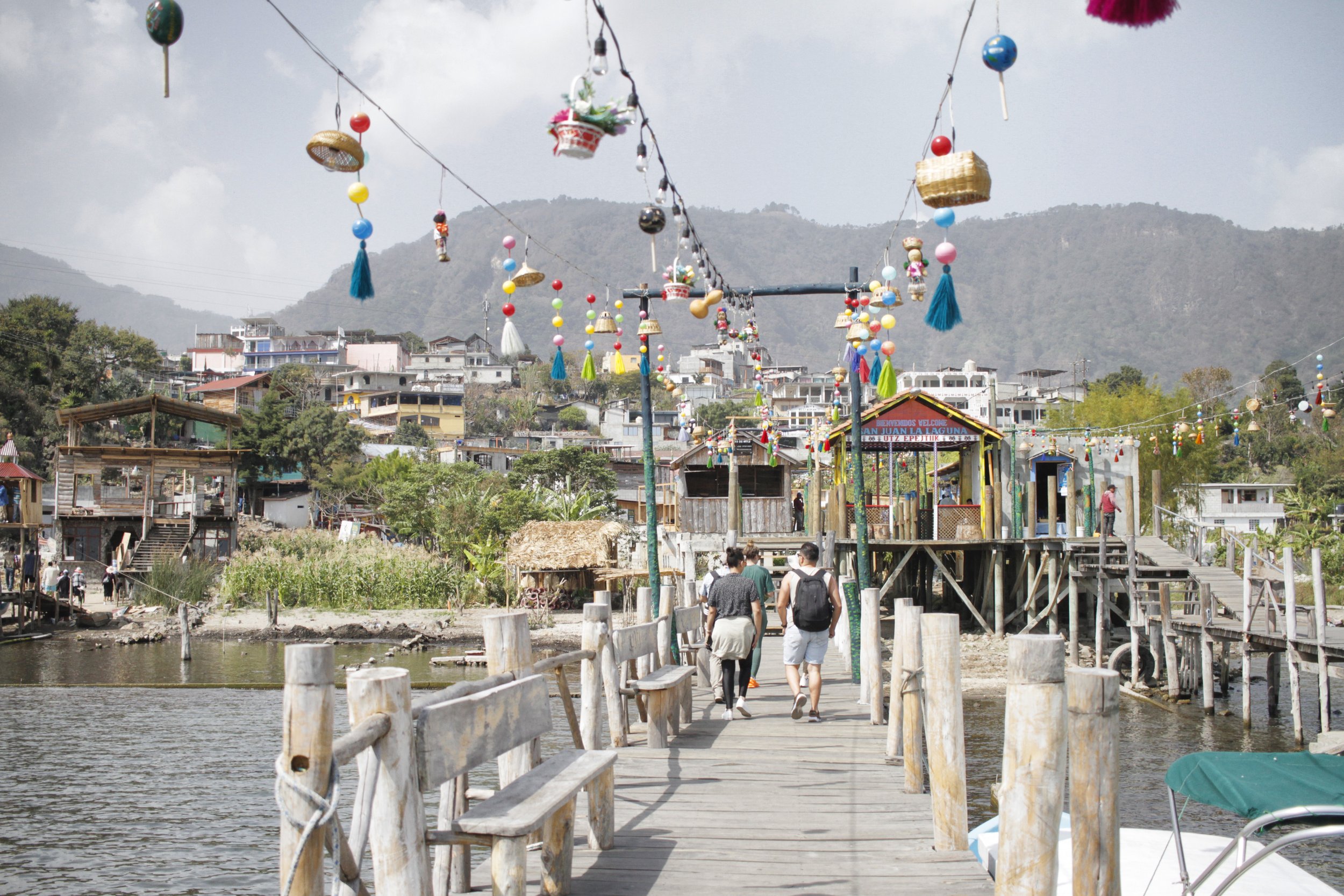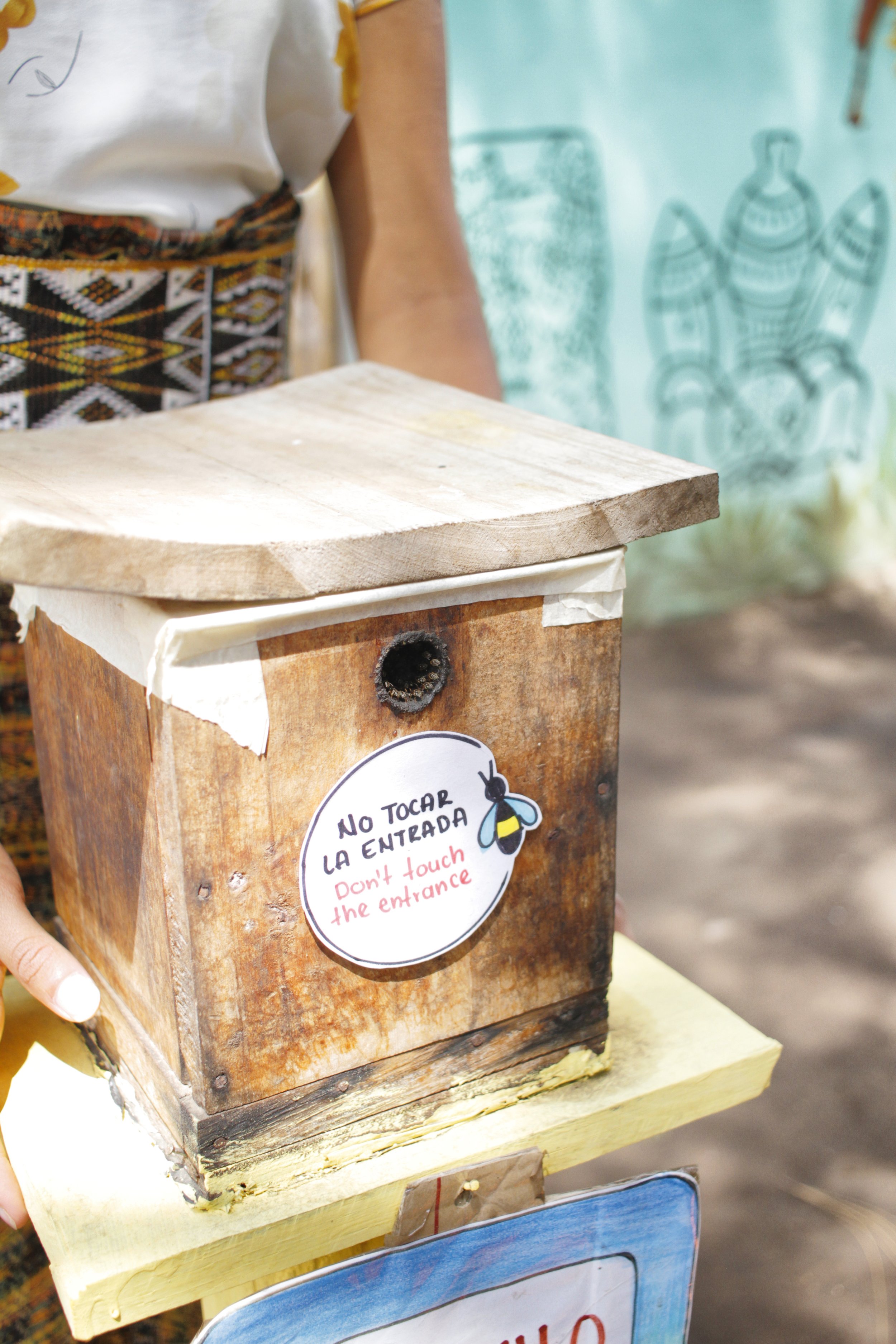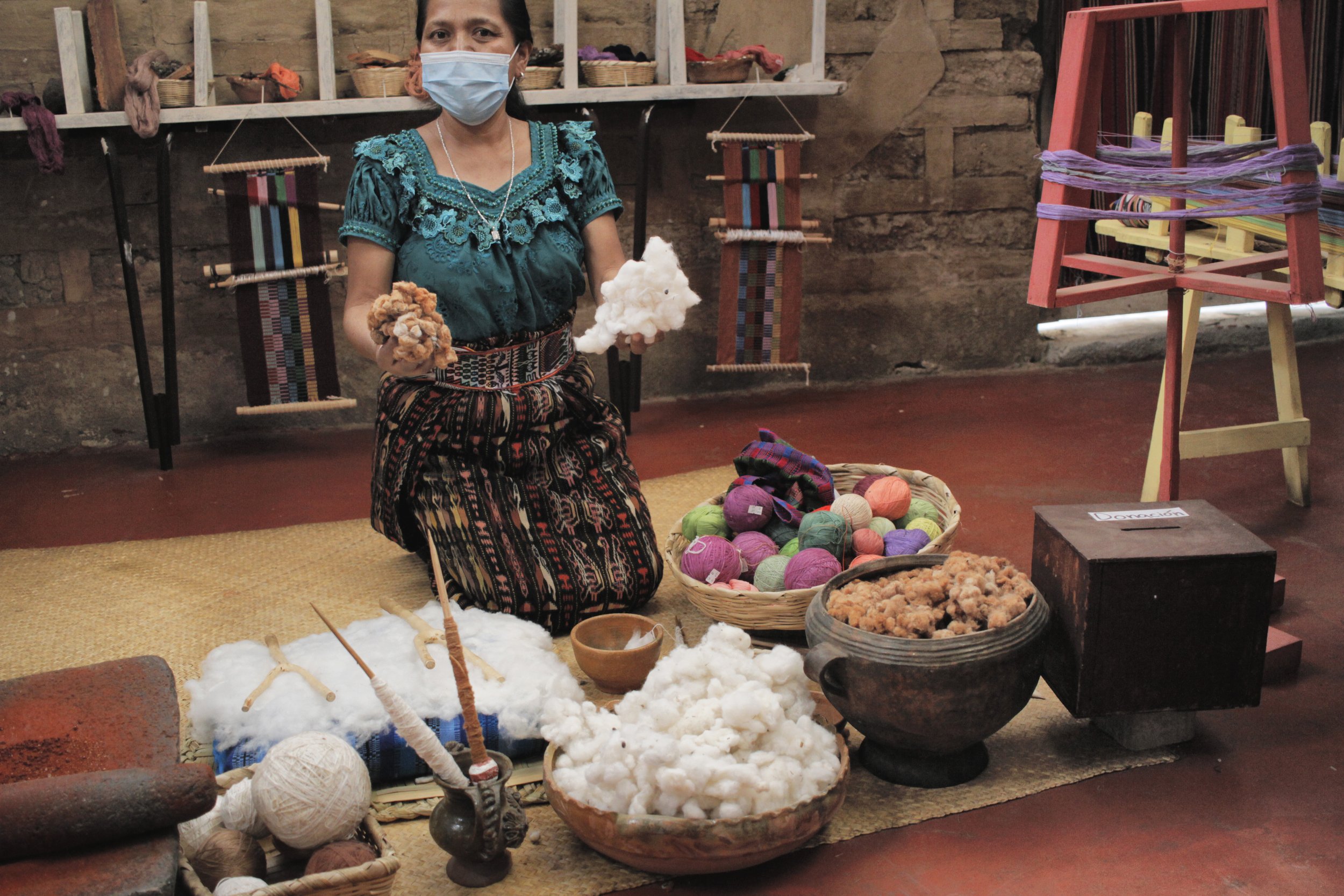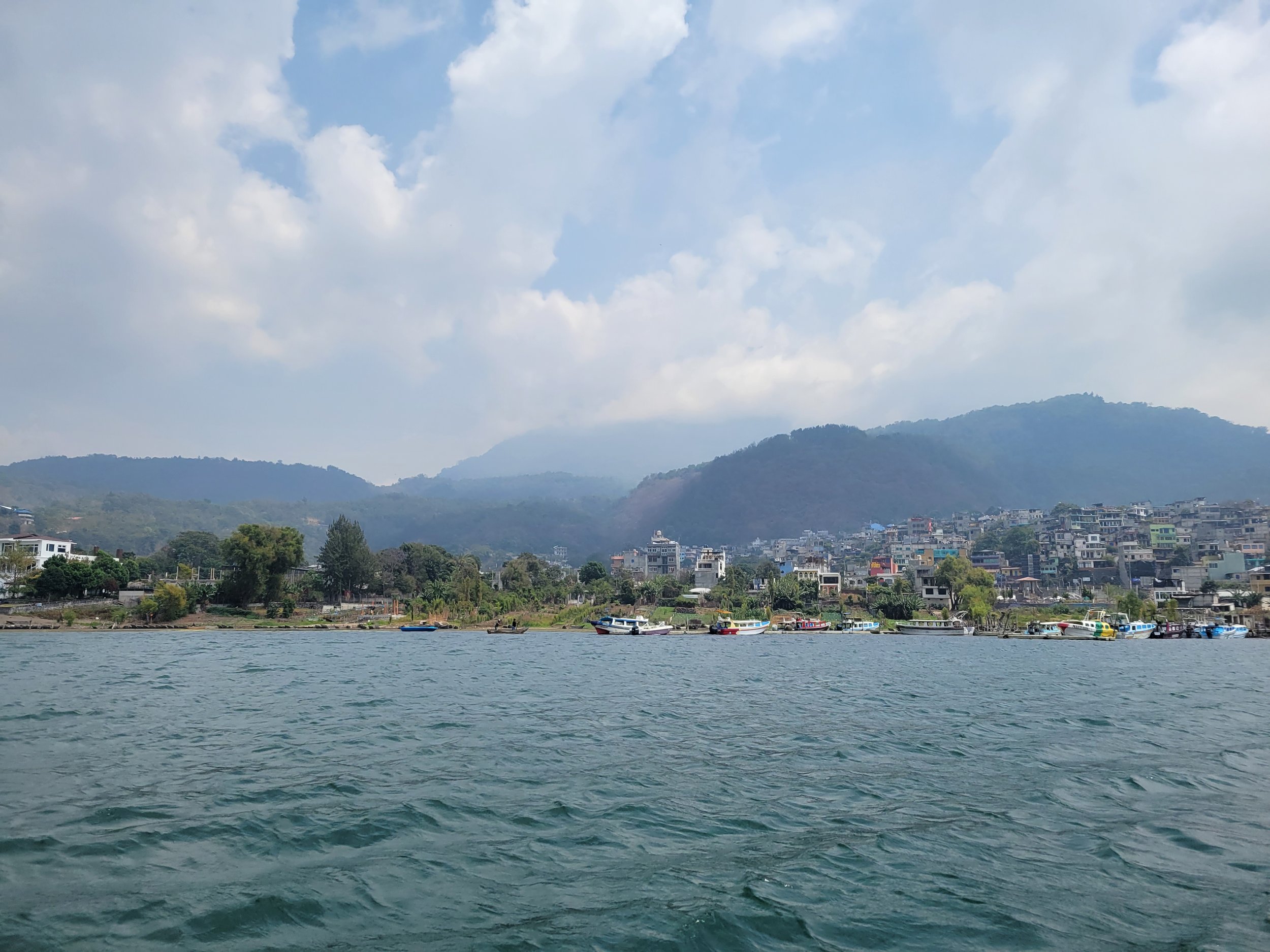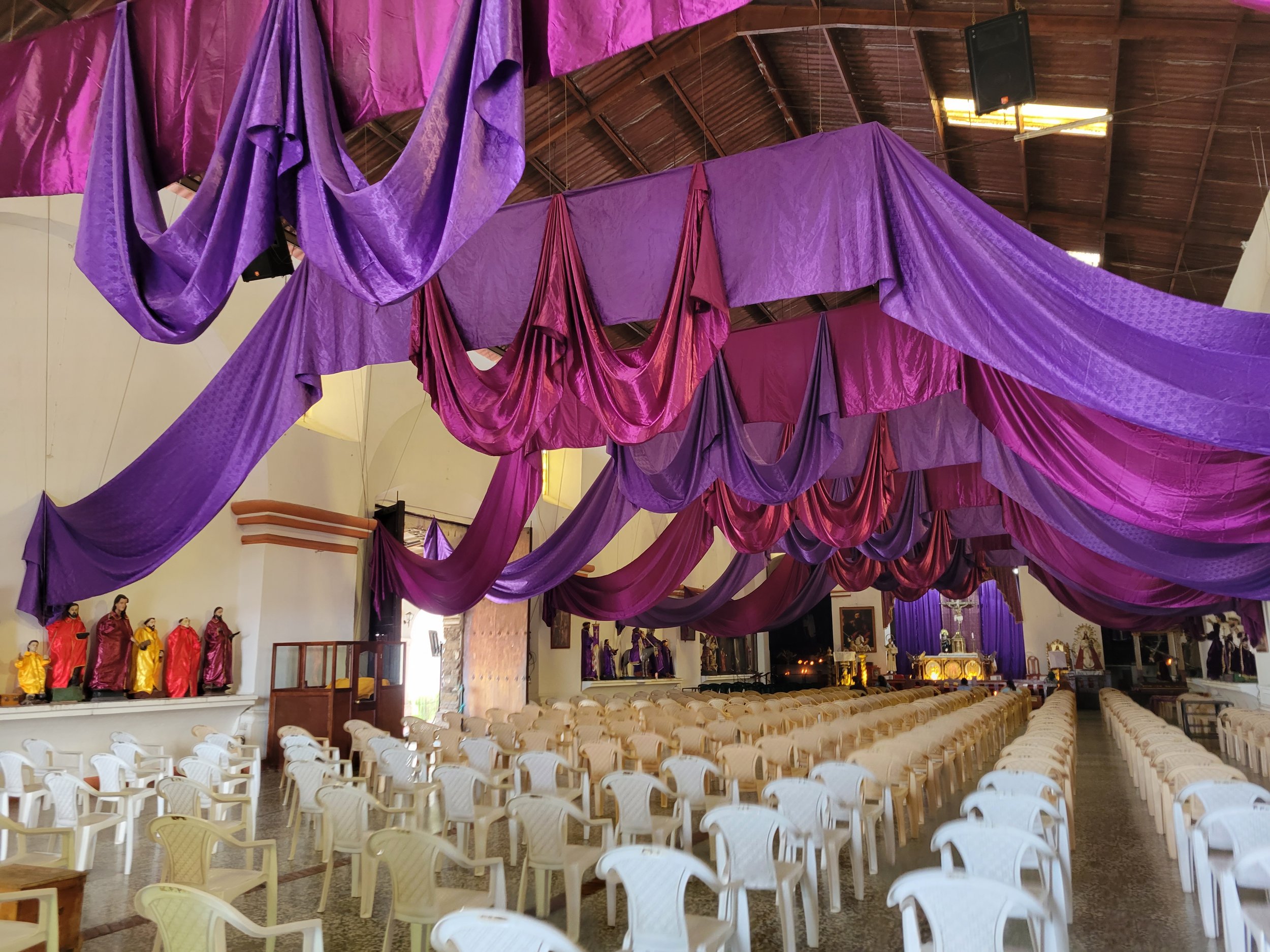Lake Atitlán & Its Surrounding Mayan Villages
Best things to do in Lake Atitlán: discover its mythical energy & surrounding Mayan villages with this travel guide.
Guatemala is a Central American country south of Mexico known as the Land of the Eternal Spring.
It’s home to incredible natural beauty like volcanoes, rainforests and ancient Mayan ruins and is a country with a fascinating history, gorgeous tropical weather and colorful cultural traditions that make this region perfect for those who like to explore.
The capital of Guatemala City is home to palaces and museums, while Antigua, a quaint little town west of the capital, boasts incredibly preserved Spanish colonial architecture. Lake Atitlán is a gorgeous volcanic crater surrounded by coffee fields and villages that feel truly authentic, while in the north, Tikal National Park is one of the largest archeological sites and urban centers of the pre-Columbian Maya civilization.
Lake Atitlán is a body of water in a massive volcanic crater in Guatemala’s southwestern highlands of the Sierra Madre mountain range.
Volcanic in origin, an enormous caldera formed by a volcanic eruption some 84,000 years ago and then filled with water reaching depths over 1,000 feet, making it the deepest lake in Central America.
Today, it’s known as one of the most beautiful lakes in the world and used both recreationally and as a food source.
Literally meaning "between the waters,” Lake Atitlán is known for its nearby Mayan villages and massive volcanoes that tower high above the surrounding landscape.
Lake Atitlán can be accessed by the busy town of Panajachel, a popular gateway to the lake and town where vendors sell traditional textiles and souvenirs worth a look.
My time in Guatemala began with a missed flight and multiple trips back and forth to LAX, but was well worth the trouble once I landed in the candy colored colonial city of Antigua. Flying into Guatemala City, Antigua can be reached by taxi in under an hour.
After spending a few magical days wandering Antigua on foot, I took a day trip to Lake Atitlán to explore its Mayan villages and volcanic crater lakes.
While back in Antigua, I linked up with a local guide to tour Antigua’s indigenous villages in search of macadamia nuts, textile markets and authentic Guatemalan fare.
In northern Guatemala, using Flores as my base, I explored the wonders of Tikal National Park, a hidden ancient Mayan civilization.
Best Things to Do in Lake Atitlán
Arrive / In the village of Panajachel
Explore / San Juan Village & discover all things chocolate
Satisfy / Your sweet tooth at a Mayan bee farm
Weave / Your way into a local textile co-op
Stroll / Through the village of San Pedro
Enjoy / Fresh fish in the village of Santiago Atitlán
Honor / Saint James the Apostle Parish
Best Things to Do in Lake Atitlán
Arrive in the Village of Panajachel
From Good Hotel in Antigua, I arranged for a driver to pick me up and head the two hours northwest to Lake Atitlán. Weaving in and out of curvy mountainous roads, passing mostly fruit farms, we arrived near the lake in the town of Panajachel. Initially, I was dropped at an agency without much of an explanation but within time I was led to our meet up point at a local restaurant.
They served up a typical Guatemalan breakfast of scrambled eggs, black beans, cheese, fried plantains and papaya with coffee. Another couple from Costa Rica and a mother daughter duo from the States joined, along with our guide, Alex. After a rushed meal, our group made its way a short distance to a boat at the edge of the lake. This was a shock to me; for some reason, I thought we’d be spending time around the lake, not in the lake. Though blanketed in fog, the approach to Lake Atitlán was something else, equal parts beautiful and mysterious.
The six of us made our way down to the waters edge and jumped into a small blue boat. We were off, as our guide began to share interesting facts about the lake and outline what our day would look like.
In regards to the surrounding area, Panajachel is a town in the Guatemalan Highlands west of Guatemala City on the north shore of Lake Atitlán. It’s a cute area where restaurants, cafes, bars and stalls selling handicrafts and textiles line its main street, Calle Santander. Boats connect the town of Panajachel with lakeside Mayan villages like San Pedro, San Marcos, Santa Cruz and Jaibalito and offer incredible views of the three volcanoes surrounding the lake: Atitlán, Tolimán and San Pedro.
Surrounding the lake are 12 villages with a few only reachable by boat. These villages are a great source of agricultural importance to the area, supporting extensive coffee and avocado orchards, as well as a variety of crops like corn, onions, beans, squash, tomatoes, cucumbers, garlic, strawberries, chile verde and pitaya fruit. The lake itself is also a significant source of food for the indigenous population.
In 1996, several submerged archaeological sites were discovered in Lake Atitlán. Among them is a Mayan village known as Samabaj, which holds remains of dwellings and religious monuments. The village seems to have been built on an island that became submerged, possibly by volcanic eruption, landslide or other natural disaster.
Explore San Juan Village & Discover All Things Chocolate
Crossing the lake was gorgeous. The water was clear and clean but it was tough to see much above its surface due to the intense fog. Though controversial, farmers burn sugarcane crops before harvest to remove the leaves and tops of the sugarcane plant leaving only the sugar-bearing stalk to be harvested. Our first (and my favorite) stop of the day was the village of San Juan. Arriving after a 20 minute boat ride directly across the lake, we received a colorful welcome.
San Juan is a municipality on the southwest shore of the lake and consists of the village of San Juan and three smaller villages in the nearby mountain. It’s population is approximately 95% Tz'utujil. The Tz'utujil are a Native American people and one of the 22 Maya ethnic groups that live in Guatemala. Approximately 100,000 Tzʼutujil live in the area surrounding Lake Atitlán.
Particularly less popular among tourists and expats because a local law prohibits outsiders from purchasing land within the area, this town was my favorite stop of the day. Visitors can enjoy a more authentic experience among the indigenous Tz'utujil people here. Additionally, the town of San Juan has used government money to develop co-ops. They’ve invested in education and women, in particular, are empowered here. They do not depend on men for their livelihood which is typically the norm elsewhere.
Stepping off the dock and walking up the main street felt like a warm welcome. Colorful decorations and rows of umbrellas hung from lines above creating a fun and inviting atmosphere. It was a lovely moment and a beautiful spot to grab a photo, especially with the mountains and lake in the background.
Local women were set up along the street selling artisan crafts but rushed on time we didn’t have a moment to stop and take a look.
San Juan was cute; it felt small and quaint and most of all, authentic. Our first stop was a chocolate factory called LICOR MARRON CHOCOLATE where all its sweet treats are handmade.
Inside, there was a beautifully green and lush patio and a demonstration area for visitors to learn about the chocolate making process. Our group sat down for a quick demonstration showing the process from beginning to end.
After years of growing, seeds eventually produce cacao fruit or cocoa pods. The fruit is then hand picked and opened to find cocoa beans covered in a sweet white flesh called pulp. After removing the white flesh, the cacao bean emerges.
The cacao beans are then fermented, usually in a wooden box lined with banana leaves as to not taint the flavor. This process typically takes six to 10 days. Then, they are dried, taking another five to 10 days.
From there, the raw cocoa beans are roasted in small batches, slow and steady. Our host showed us exactly how it’s done using a small stovetop burner.
Roasting is a delicate process and helps to develop the beans’ flavor, kill any bacteria, reduce moisture and loosen the outer shell which needs to be removed for the highest quality. Roasting can take anywhere from five to 35 minutes at a temperature of 250-325°F.
Though incredibly bitter, we were able to taste the roasted cocoa beans after our host deemed them ready to sample.
The next step in the chocolate making process is to grind the roasted cocoa beans by hand, creating a thick paste. With great pride, they do not boil beans or use a machine to grind them at this factory.
Our host began with a small batch, placing the beans at the center of a large stone. Using another round stone resembling a rolling pin and often known as a mano or metlapil, she began grinding. Back and forth, back and forth, back and forth, moving in a horizontal gliding motion rather than a vertical crushing one.
With the idea to grind until a smooth texture had been reached, she moved over the beans with the stone again and again. Slowly, the beans began to turn into a paste.
Methodically and with much concentration and strength, she ground more and more, pushing any of the finished product to the top of her stone.
Eventually, when she was please with the consistency she offered up a small taste.
As expected, the ground cocoa beans were very bitter without any additives such as sugar.
Following that incredible demonstration, we had a few minutes to wander the shop and pick up some goodies. There were countless varieties of chocolate bars and other sweet treats, some with various levels of sugar and others, combined with herbs and spices like ginger, mint, cardamom or cinnamon.
Satisfy Your Sweet Tooth at a Mayan Bee Farm
Loading up on chocolate was a nice treat but we were off to another sweet destination. Walking distance from the chocolate factory was a honey farm called Mundo de Abejas Mayas. Super excited, this was my first time visiting a honey farm and I couldn’t wait to see what was inside. I was especially curious about Mayan bees; were they so different than the ones I was used to?
Straightaway, I got my answer. We linked up with a young girl who would be our guide for the next hour or so. She explained that Guatemalan bees are much different than European ones; they are extremely tiny and do not have a stinger. Interestingly, they also make different kinds of honey.
A note on honey: all forms of honey naturally contain nutrients and enzymes which have a variety of health benefits and medical uses. Throughout history, honey has been used as a remedy for many ailments and health conditions. There are several different types of honey with the taste, color and nutrient content dependent upon where geographically the bees collected their nectar and the variety of flower it came from.
Now, raw honey can be defined in two ways. True raw honey comes straight form the beehive. It’s packaged and consumed without adding any heat. Commercial raw honey is usually slightly processed but less so than honey not labeled as raw. The reason raw honey is desired is that adding heat to honey can remove or destroy many of the beneficial antioxidants and bacteria, though it can help improve color and texture.
First up, our guide explained a diagram listing the body parts of these special little insects, highlighting the worker bees, drones and queen bees.
Our bee guide then showed us each of their homes. Some sat on the ground, while others were housed in small wooden boxes. Others still, looked more like the traditional beehives we’re all familiar with. First, the lemongrass hive.
Unfortunately, I’m a little unclear on why lemongrass was being used, or if it’s the name of the type of bee or even what they’re using to attract bees. Regardless, what was clear was that it’s important not to touch the opening as all the bees congregate around that area, perhaps to protect the queen.
Along the back wall were a handful of other types of bees. There was the black stingless bee, called the trigona corvina, or sometimes known as zagañas. This species lives primarily in Central and South America high in trees in protective nests. They can be aggressive but are effective pollinators and less harmful to humans than honeybees. Impressively, they have a minimum foraging range of nearly one mile and forage over 500 species of flowering plants including more than 100 tree species. Black bee honey is very valuable and rare as it can be 10 times richer in antioxidants than other varieties.
Honoring all the bees, the bee farm offered tons of products related to the bees and their honey: royal jelly, all types of honey, honey liquor, lip balm, creams, candies and so on. We were also able to taste ‘white’ honey and ‘black’ honey, which I took a liking to. Each one had a different flavor; the white had a thinner consistency and was sweet and floral, while the black was deeper and richer in flavor. Generally, white honeys have a milder flavor when compared to darker honeys. Flowers that produce white honey are sage, alfalfa, firewood and white clover. Note, white honey doesn’t exactly look white, it’s more of a light amber or water-white color.
Weave Your Way Into a Local Textile Co-op
Our last stop in San Juan was an incredible textile shop called Kemo Asociacion. There, they showed us the weaving process from start to finish, highlighting each step. To begin, cotton is picked; there are two types: brown and white.
The seeds are removed and planted in soil to create new cotton plants. Then, the cotton is spread and softened by beating and woven into string with a spindle.
Seemingly a bit complicated, the string or yarn making process goes as follows: using a hand-held spindle, twist the end of the cotton fibers into the tip of the spindle, then spin and drop the spindle down repeatedly. Bring the spindle up into your hand to wind the yarn around the spindle, feed more cotton fiber into the spindle and then twist and drop it down again.
The most interesting part of the demonstration came next. The cotton string is dyed with natural dyes from plants, vegetables, insects and tree bark to reach various shades of color. The co-op had laid out each plant alongside the color of yarn it creates. Plants like oak bark, annatto seeds, avocado bark, beets, guava leaves, hibiscus flower, carrot, rosemary, coconut shell and whistle tree leaves are all used to color the yarn.
To concentrate the pigment, plants, vegetables, insects and tree bark are dried and ground into a fine powder. The powder is then added to water and boiled for 30 minutes to create a rich color. As a rare ancestral Mayan practice, locals also use banana trunk to help set the dye. The banana tree bark is boiled for at least two hours and combined with the colored liquid before the thread is added.
Local Mayans also believe cutting plants during a full moon will ultimately produce stronger, more vibrant colors for their dye. It’s said that harvesting foliage, flowers and fruit just before the full moon gives the benefit of peak moisture.
Threads are soaked from 30 minutes up to four hours, then dried and finally weaved into a design by trying knots on a backstrap loom, a traditional practice that’s been in use for thousands of years, passed through generations as part of the local Mayan culture.
An ancient art practiced for centuries in many parts of the world, the backstrap loom is used daily in many parts of Guatemala by Mayan women who weave fabric for textiles like clothing, tablecloths, blankets and scarves.
The loom itself is simple, typically six to seven rods, often handmade by the weaver. It’s easily portable because it can simply be rolled up and laid aside when not in use, one of it’s greatest benefits, alongside its small size. The back rod is tied to a tree or post while weaving, while the other end wraps the waist or backside. The weaver typically sits on the floor to weave and can move back or forward to create tension, as needed.
A typical scarf might take seven days to weave and only sells for $20 USD which is why so many weavers have stopped the practice. While in the shop, of course I had to support the local tradition (plus, I couldn’t help myself), so I picked up a beautiful blanket for $100 USD which I was told took 20 days to make.
Stroll Through the Village of San Pedro
Just a few short minutes by boat was the next village of San Pedro. A village on the southwest shore of Lake Atitlán, San Pedro is also inhabited by the Tz'utujil people. In recent years, it’s also become a tourist destination for Spanish language schools, nightlife and its proximity to the lake and surrounding volcanoes. Tourists can hike to the top of the San Pedro volcano or the Mayan Face, also known as Rostro Maya, the highest viewpoint overlooking the entire lake. Visitors can also study Spanish, volunteer, learn local crafts or party in the restaurant sector.
A quick stop, our group was only on San Pedro for a short time and sadly, didn’t get into anything interesting other than walking the main strip. It did feel a bit young and more of a party town than anything else but with time, other activities might be of interest.
After a quick wander past countless restaurants, coffee shops and boutiques we were once again on our way, hopping into the boat to our next location.
With the skies finally clearing up, it was refreshing to see the gorgeous landscape that surrounded the lake and spot some of the volcanoes our guide had mentioned early in the day.
Enjoy Fresh Fish in the Village of Santiago Atitlán
The last stop of our tour was the village of Santiago Atitlán, possibly the most traditional villages of them all. Previously called Chuitinamit, this town was the capital of the Tz'utujil people in pre-Columbian times and the majority of its residents are indigenous Maya. Santiago is home to the Cojolya Weaving Center and Museum which displays the history, tradition and process of backstrap loom weaving, the evolution of the traditional costume of the Tzutujil people and history of the indigenous people of Santiago Atitlán.
Historically, Santiago was the site of significant state-sponsored violence during the country's civil war. Some of the most noteworthy incidents that occurred during that time include the assassination of Roman Catholic priest, Stanley Rother, and the massacre of 14 people, wounding 21 others, when the Guatemalan army opened fire on an unarmed crowd of civilians.
On a lighter note, our group split up trying their hand at various local restaurants. Though there are many more activities Santiago offers like visiting the local cemetery with tombs dating back 150 years, climbing the viewpoint Mirador del Valle, exploring local markets, art galleries and parks, we only had an hour or so to wander.
More than ready for lunch, I sat down at a seafood restaurant called Don Cangrejo near the water’s edge. I selected local black bass right out of the lake, with black corn tortillas, guacamole and starfruit juice.
The fish was incredibly tasty, tender and moist, especially paired with the tortillas and guacamole, though I did have to be careful of the bones; the starfruit juice was delicious.
Toward the end of my meal, a little boy passed by selling juice in small plastic bags. Of course, I had to pick one up to support his efforts.
Honor Saint James the Apostle Parish
Honor Saint James the Apostle Parish
Saint James the Apostle Church sits high atop a hill overlooking the village of Santiago and was our final destination for the day. Locally known as Parroquia Santiago Apostol, the parish was built by the Franciscans in the mid-16th century when the Spanish arrived in Guatemala and began pushing Catholicism onto the indigenous peoples. Both culturally and historically valuable to the local community, it’s a space that honors tolerance, combining Catholic beliefs with ancient Mayan traditions.
Signifying penance, preparation and sacrifice, both the exterior and interior of the parish were adorned purple silk fabric. Along the sides of the church were wooden statues of saints, each of which receive new clothes made by local women every year. At the front, stood three colonial altarpieces renovated between the years of 1976 and 1981 by brothers Diego Chávez Petzey and Nicolás Chávez Sojuel. Symbolizing the three volcanoes that surround Santiago, they are believed to protect the town.
Most notable might be the portrait of Catholic priest, Father Stanley Francis Rother, who was assassinated during a decade long conflict in Santiago. A memorial plaque just inside the entrance to the right commemorates this missionary priest from Oklahoma. Loved by the local people, he was murdered in the parish rectory in 1981; his bedroom remains open to visitors.
And with that, our group hopped back into the boat for its final leg, returning to the town of Panajachel and ending the day back at the tourist office. From there, I received a ride back into Antigua, two hours away.



